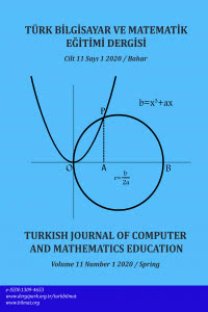Öğrenme Ortamına Çoklu Zekâ Kuramını Taşıyan İki Öğretmen ve İki Araştırmacının Yolculuğundan Yansıyanlar
Bu çalışmanın amacı, Çoklu Zekâ Kuramı’na göre tasarlanan öğrenme ortamlarında gerçekleştirilen matematik öğretimini “öğretmen rolü” teması bağlamında değerlendirmektir. Bu araştırma ilköğretim okullarında çalışan iki öğretmenle özel durum çalışması yöntemi kullanılarak yürütülmüştür. Veriler öğretmenlerle gerçekleştirilen mülakatlar ve bu süreçteki gözlemler yoluyla elde edilmiştir. Mülakat ve gözlemler içerik analizi yapılarak çalışmanın amacı doğrultusunda verilerden kodlar ve temalar oluşturularak analiz edilmiştir. Çalışmanın sonunda tasarlanan öğrenme ortamında gerçekleştirilen öğretimin öğretmen rolünde değişimin kaçınılmaz olduğu ortaya çıkmıştır. Bu tür uygulamalar, öğretmenlerin öğretim ortamlarındaki uygulamalarının değişiminde katalizör görevi gördüğü için benzer uygulamalar sıklıkla yapılmalıdır.
Anahtar Kelimeler:
Matematik öğretimi, çoklu zekâ kuramı, öğrenme ortamı tasarımı, öğretmen görüşleri, öğretim materyali
Reflections from a Journey of Two Teachers and Researchers Transporting the Multiple Intelligence Theory into the Learning Environment
The own paradigm of adopted intelligence in mathematics education can create differences in mathematics teaching strategies (Robert, 1997). If an individual’s intelligence is considered as a stable native of ability and a whole, his/her success in learning of mathematical concepts is associated with limits of his/her intelligence. Contrary to this belief, if intelligence is considered as a multiple capacity and a developing ability, educators will take responsibility of developing a child’s intelligence by considering the development level of each child in class. In Multiple Intelligence Theory (MIT), the aim of education is not only to enhance students’ academic successes but also to reveal and develop multiple intelligence capacities (Saban, 2001). When handling two approaches explained above, in the first approach, students are absolutely responsible for being successful in mathematics, but in the second one, teachers are responsible for designing, developing a learning environment, improving students’ capacities and making applications in this environment.
Keywords:
Mathematics education, multiple intelligence theory, design of learning environments, teachers’ views, instructional material,
- Başlangıç: 2009
- Yayıncı: Türkbilmat Eğitim Hizmetleri
